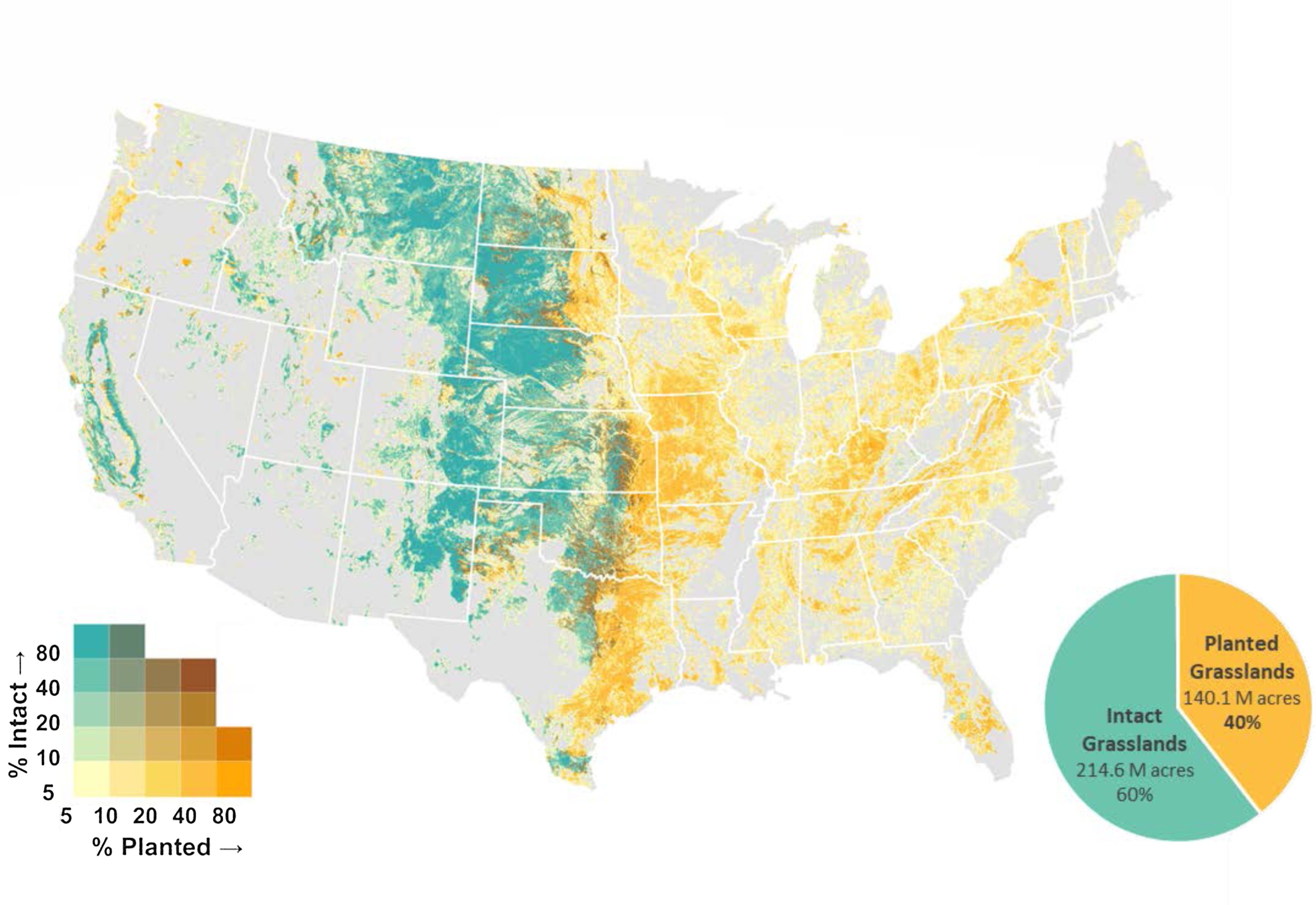America’s grasslands provide a long list of benefits – and those benefits aren’t confined to the Great Plains region.
They provide habitat for a wide range of wildlife, from deer, elk and grouse to the butterflies that pollinate the plants that grow our food. Grasslands feed cattle and sheep that help feed our nation.
They protect soil from erosion, reduce flooding by absorbing and holding rainfall, buffer wetlands and capture carbon dioxide from the air and store it in the soil.
Grasslands also serve as a massive carbon sink for the entire country – the mid-Atlantic as much as middle America. Consider this, one acre of healthy grassland – including on League chapters – can hold 40 tons of carbon.
Yet grasslands are also our nation’s most endangered landscape. Ninety-nine percent of the tallgrass prairie that once extended from eastern North Dakota and central Texas to parts of Ohio have been lost, converted to row crops or urban areas.
More than 70 percent of the mixed-grass prairie that dominated the central Great Plains has also been lost.
As a result of these continuing habitat losses, the population of grassland birds has dropped by more than half just since 1970 – a loss of more than 720 million birds.
To address the losses, the League is working on several fronts to restore and protect America’s grassland legacy.
What Once Was
The grasslands that once blanketed the Great Plains in the central part of the continent are well known. But Dwayne Estes, executive director of the Southeastern Grasslands Initiative and biology professor at Austin Peay State University, says the Great Plains was not the only place dominated by grasslands when Europeans arrived on the shores of North America.
“Today, based on a combination of historical evidence, we now believe there were in excess of 120 million acres of naturally open landscapes in the southeastern U.S.,” says Estes.
Those grasslands extended from eastern Texas across the southeast and north into Virginia, Maryland and Pennsylvania, and they supported a diverse array of plants and animals, many of which are disappearing.

Looking at a longleaf pine savanna in eastern North Carolina, Estes describes it as “the richest plot of land in North America in terms of plant diversity,” with 52 plant species in a single square meter. “We’re talking about the rarest of the rare, Venus flytraps, pitcher plants, sun dews, orchids. About six species of plants that can eat animals occur in this single plot.”
Today, most southern grasslands have declined by at least 90 percent, converted to cropland or overgrown by forests as a result of fire suppression.
In the West, 44 percent of sagebrush habitat has been lost, and as a result Greater sage-grouse populations have declined by 80 percent since 1965. From grasslands and meadows of California to the dry prairie of Florida, America’s grasslands are being lost at an alarming rate.
But there are solutions.
Farm Lands Are Key to Restoration
Farmers and ranchers own about 440 million acres of America’s grasslands, and much of it supports cattle, sheep and other livestock. The League is helping lead an effort to double the federal investment in conservation programs that help farmers and ranchers be better land stewards. Part of that increase would help landowners permanently protect grassland and help ranchers set up grazing systems that restore the health of those lands.
This investment in grassland conservation will benefit all Americans. It will improve soil, water quality and wildlife habitat. It will reduce some of the worst impacts of climate change. And it will help ensure that future generations can enjoy the long-term benefits of preserving this vital natural resource.
The League has also asked Congress to provide dedicated funding for the Grazing Lands Conservation Initiative at the US Department of Agriculture. If we are successful, ranchers will have better access to education on grassland management and technical advice from experts, and they could receive support for the organization of rancher networks that let farmers learn from each other.
Working with the National Wildlife Federation, Pheasants Forever and other conservation groups, the League is also advocating for Congress to enact a North American Grasslands Conservation Act. Modeled after the highly successful North American Wetlands Conservation Act, this legislation would provide a bold new national policy to support grasslands and provide funding to help Tribes and other landowners conserve and restore threatened grassland systems around the country. Learn more at www.ActForGrasslands.org.
America’s grasslands are in trouble, but the solutions are at hand. Find out how the League is working for policies designed to conserve and protect these vital landscapes for future generations at www.iwla.org/agriculture.
Published in Outdoor America, Issue 4, 2021.
For 100 years, the Izaak Walton League has fought for clean air and water, healthy fish and wildlife habitat and conserving natural resources for future generations. Today, the League plays a unique role in supporting local community-based science and conservation and shaping national policy. See www.iwla.org.
Media contacts: Michael Reinemer, Communications Director, mreinemer@iwla.org; Duane Hovorka, Agriculture Director, dhovorka@iwla.org.
Map: Land Use Policy